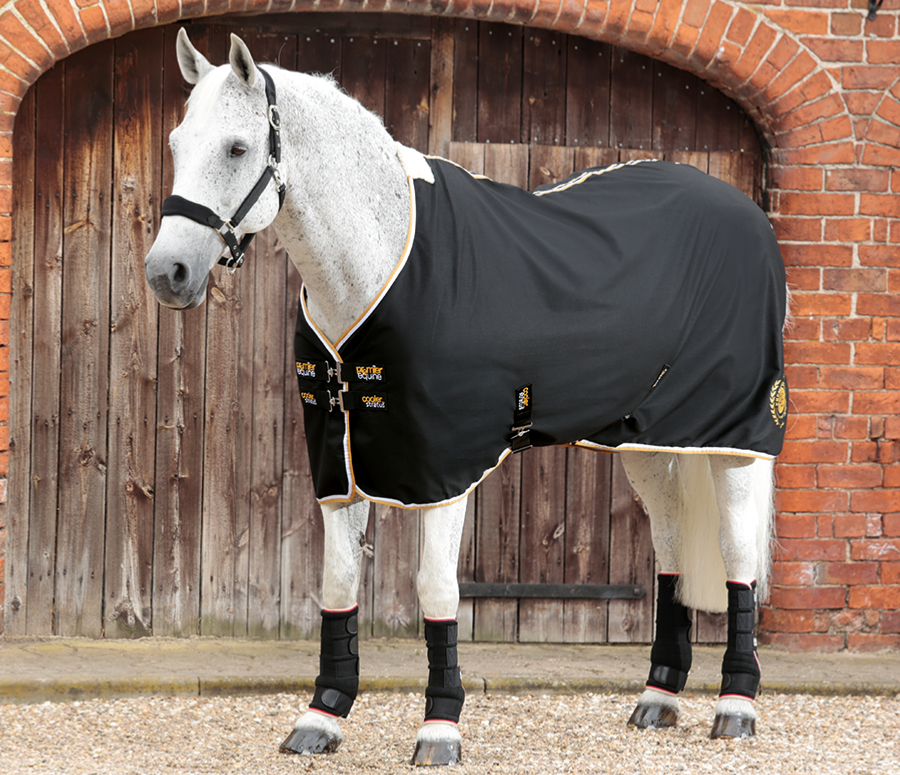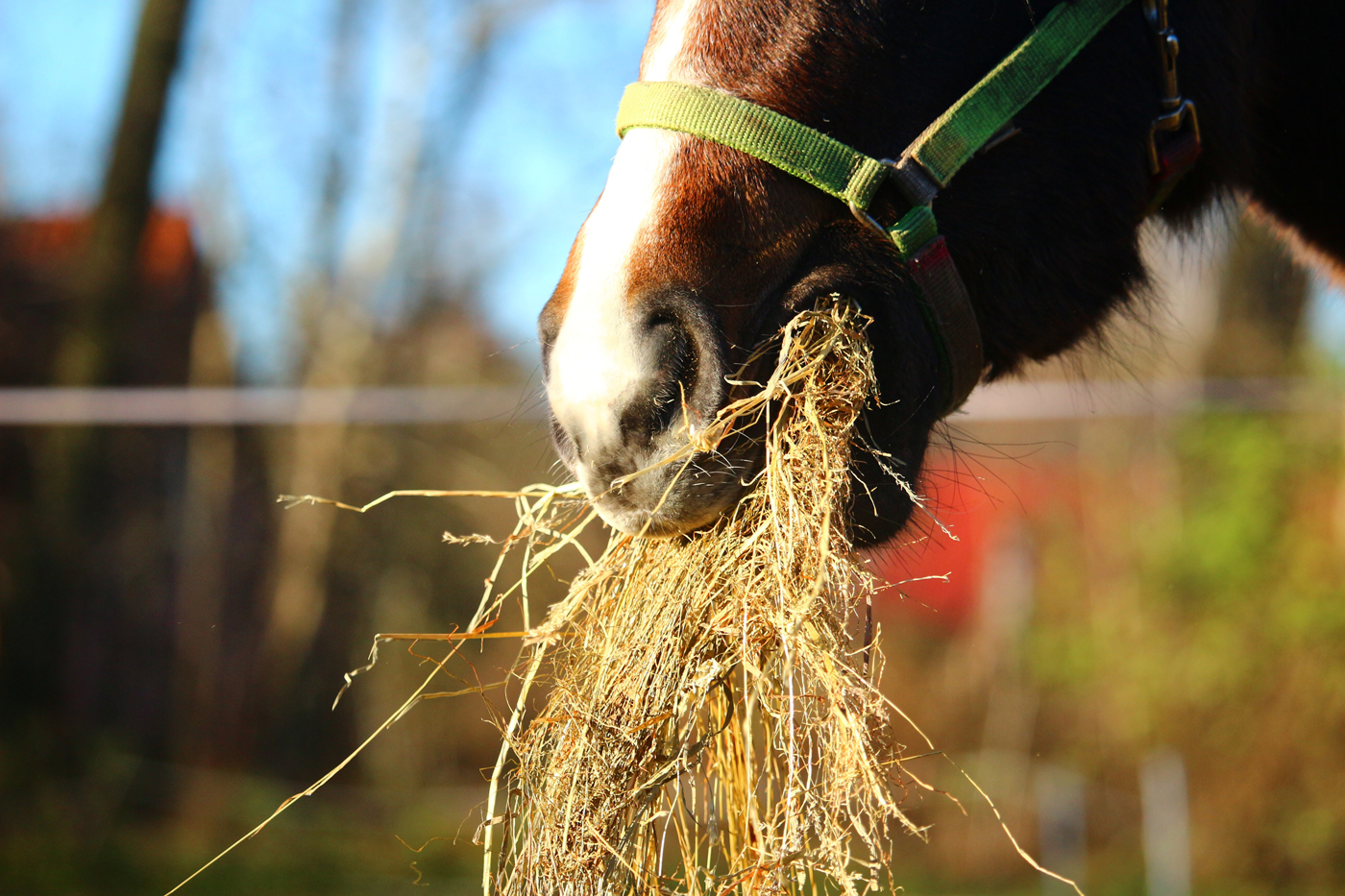You’re right to think that your horse might need a few more provisions made in the winter, when the weather is cold, the field bare and illness more common.
Caring for horses attentively through winter will help to ensure that they get through the season with as few problems – and as few visits to the vets – as possible.
If your horse becomes ill, vet bills can quickly rack up, which is why it’s so important that you have adequate horse insurance.
Horse insurance policies from Equesure can cover horses valued up to £750,000 and provide up to £12,500 towards vet fees throughout the year.
Before we offer up some tips on how to care for your horse this winter, it’s important to note that your equine needs to be treated as the individual it is…
What individual provisions do I need to make for my horse?
The breed of your horse or pony will dictate how you go about making him comfortable in the winter.
If native to Britain, the horse will have evolved with a hardiness that makes it able to cope with relatively severe winter weather.
However, breeds from warmer countries, such as Thoroughbreds and Arabs, are not as well equipped for cold winters.
They tend not to store so much fat or grow such a thick winter coat as British breeds, which will need to be compensated for.
To see how well your horse has adapted to its environment, their weight should be monitored regularly as winter approaches and throughout the season to ensure that far reserves are maintained.
A thin horse will feel the cold and use up stored fat to maintain its bodily warmth, thereby losing more weight.
Owners of horses that are less adapted to the colder climes might have to stable them overnight to help them maintain their body heat.
Age and condition will also be factors in whether you bring your horse in overnight.
Older horses may need stabling for longer periods – but this will need to be balanced with mobility.
Even if it your horse doesn’t need stabling in the winter, it will need some sort of shelter to get out of the wind and rain when necessary - think lean-to, shed or barn so they can wander in and out as they please alternatively a hedgerow or trees could provide natural shelter.

Should I put a rug on my horse?
As well as considering whether to stable your horse, you should think about putting a rug on them to keep them warm during the winter months.
Again, age, health, breed and mobility are the key considerations again which will dictate whether or not you should invest in a rug for your horse, not just the latest snazzy design or pattern!
There are three main types of rugs for horses: turnout rugs, stable rugs and sheets.
- Although stable rugs are lightweight, they’re not waterproof so don’t put one on your horse if they’re going out in the rain as it will get soaked and become uncomfortable.
- Turnout rugs are waterproof so it’s fine for your horse to wear these outside and get covered in mud.
- Horse sheets are lightweight and used more in the spring and summer months. Use them to keep your equine clean after grooming or if they’re on the way to a show in the back of a horsebox.
Be careful not to over-rug your horse, which is easily done when the UK has a particularly mild winter.
If your horse wears a rug when it doesn’t really need to, it might hold onto into additional winter weight into the new grazing season or suffer skin problems from getting too hot.
Regularly monitor how your horse is dealing with the weather and avoid the temptation to slip rugs on unnecessarily.
What do you feed horses in the winter?

Feeding your horse is relatively easy during the spring and summer months when the grass is usually plentiful.
In the winter, it requires a little more thought and effort to ensure your horse gets the right nutrition.
It doesn’t take long for a field to turn into mud in the winter, with more rain causing the ground to soften and lose its nutritional value.
So, it’s likely that your horse or pony will need supplementary feeding throughout the winter with hay.
Not just any old hay will do, however – you need to find a good equine hay that is well matched to your horse’s lifestyle.
Just as with grass, hay varies enormously in calorie content.
So, if your horse is prone to putting on weight, you should try to source low-calorie hay.
With hay as the main food source for your horse over the winter, you may want to add vitamin or mineral supplements in order to keep the horse healthy without overfeeding.
This will provide the horse with everything it needs nutritionally without adding the extra calories or too many nuts or mixes.
If you’re stabling your horse overnight, be careful not to feed them energy-dense foods (such as nuts or pellets) prior to going to bed, as they may become over-stimulated and ‘buzzy’, which can lead to unwelcome accidents in the stable, or next time you hop on to go for a ride.
Finally, don’t forget to ensure that your horse has constant access to a source of clean, fresh water every day, especially if they’re eating a lot of hay and concentrates.
Invest in horse insurance
Due to the nature of the way horses are built, they can be prone to spells of ill health, which are exacerbated over the winter.
So, it’s essential that you take out comprehensive horse insurance which will cover you in the event of a number of different circumstances.
Equesure are equine insurance experts, we have over 60 years combined equestrian knowledge and will endeavour to find an insurance policy, tailored to your needs, for you, your horse and your transport.
Working with a varied and trusted panel of insurers, Equesure offer clients a bespoke horse insurance policy with various options of cover to ensure the policy is right for you.
Get a quick quote today.





